A retailer is a merchant who sells its products through a physical storefront. The benefit of selling in a physical store is that it offers consumers a more intuitive and personalized shopping experience, which can result in increased sales.
In addition, a physical store facilitates customer contact and promotes brand visibility. With a more significant assortment of products, shoppers are more likely to make purchases they would not have done otherwise.
Yes, there is little doubt that online retail has dominated in recent years. However, there is still a role for physical retailers. In fact, now may be the ideal time to launch a physical store.
This article provides tips and detailed information on how to start a wholesale workout clothes business.
Benefits of Running a Sports Clothing Retail Store

Sporting goods shop management can be a profitable venture. Physical activity helps many people’s moods and overall quality of life, and having a store gives them a social outlet. Furthermore, running a firm may provide an opportunity to learn new skills and network with industry leaders.
Moreover, it is anticipated that the sportswear market will expand at a compound annual growth rate of 6.2% between 2022 and 2032. During the pandemic, the demand for apparel designed for physical activity increased. Since the lockdown, many people have made improving their fitness and maintaining their health a top priority. The market for fitness clothes is expected to grow at a compound annual growth rate of 5.2% between 2017 and 2021. Furthermore, the sale of sportswear might bring in as much as $384.8 billion by 2032 for the manufacturers.
Furthermore, physical running sports gear stores (learn: Secrets to Running an Online Sports Clothing Store in 2022) provide options for exercise enthusiasts. They have the choice of choosing the best fit. Here are some of the benefits of face-to-face communication.
Building relationships when networking
Offline marketing offers an amazing opportunity to get to know the customer. Face-to-face networking allows the owner or staff to speak directly with the audience.
Business cards or leaflets are ideal in these situations. This builds trust with potential clients and makes it simple for them to contact after a meeting.
Providing something tangible to customers
Print gives the consumers a tangible item to hold, feel, and associate with the brand. Here are some samples of actual items.
- Provide a gift for loyal customers with personalized handwritten notes.
- Subscription-based service that provides access to content or supplied physical things.
- Give away freebies, this will allow customers to share them through their social media.
- Promotional goods featuring the company’s logo to foster a positive relationship.
Moreover, the customer is paying for a physical good or service. This gives them a sense of ownership and investment in the organization.
If a business can provide good service and a high-quality product at a reasonable price, it will most likely create a loyal customer base.
Various distribution strategies are available
The benefit of offline distribution is the range of distribution options and these includes:
- Flyers. Flyers raise attention to the business or brand by placing everyday items and services, as well as new offers, in the hands or mailboxes of customers. There are several promotional tactics available, but flyer distribution has several advantages.
- Insert advertisements directly into letterboxes. Distribution to physical addresses has long been an essential part of many companies’ marketing activities since it is tactile, relatively inexpensive, direct, and successful. Indeed, letterbox distribution was once so standard that it was regarded as a marketing cornerstone.
- Business cards. Purchasing business cards in bulk is relatively inexpensive. It is an excellent tool for increasing brand recognition and obtaining new customers.
Furthermore, think about including a call to action. For example, this may be an in-store offer valid upon presenting the leaflet. Include a link to the website or social media sites.
More beneficial for boosting loyalty programmes
Business owners might need more money for an integrated loyalty app like those seen at retail stores. On the other hand, a paper loyalty card program may still deliver physical benefits.
It can provide analogous incentives for digital apps, such as free coffee or services after a particular number of transactions. They are an excellent way to build trust and raise awareness, and they are simple to print and distribute.
The advantages of having loyalty programs include the following:
- Provides an exceptional customer experience: Consumers today prefer immediate rewards from loyalty programs over the traditional long-term build-up structure due to the continually altering customer demand landscape. Customers may return to loyalty programs that provide a reward closer to the point of purchase, such as a sign-up bonus or fast money off their next purchase. The organization can differentiate itself from its competitors by avoiding sign-up or membership fees.
- Creates a long-term relationship between the customer and the brand: This practice helps retain customers and builds a more profound relationship across the entire organization as customers become more invested in the brand.
- Customers are surprised and delighted: In response to this trend, some companies are developing personalized loyalty card services, generally through interactive applications. Individualized, tailored offers are generated based on a customer’s interests and previous purchases. Developing a closer relationship with customers in this way can help to strengthen those relationships.
- Convert customers into brand advocates: Word-of-mouth marketing is one of the most effective branding tactics. This leads to more people talking about your business, more people signing up for your program, and more potential benefits like increased sales.
Quick and easy orders
There are various moving parts when arranging a trade show or product launch. Quick turnaround times are possible for the design and ordering of printed materials. Making them suitable for last-minute events, time-sensitive promotions, or even remembering to buy earlier.
How To Start a Sporting Goods Store

When starting a private label activewear business. It must be updated regularly to match the most recent activewear trends. For instance, exercise at home during COVID-19 or strenuous outdoor activities in the ecozone could raise demand for gear and equipment in 2022 and 2023.
The following are things to consider when starting a fitness clothing brand store.
Market research

Before starting a sporting goods store business such as wholesale women’s joggers, it is critical to discover competitors and evaluate their performance. Visit various sporting goods stores in the area to weigh the benefits and drawbacks of their items and services.
If people are interested in an underrepresented sport, this could be a chance to dominate the market. Determine the most popular local sports and hobbies. For popular outdoor activities like kayaking and hiking, a nature reserve or park, for example, is a lucrative market.
Bicycle demand is projected to increase in cities with great bike paths. This will help create a business plan for a bicycle rental, sales, and repair business. Furthermore, concentrating on a niche market allows covering all facets of a particular activity without limiting the available resources.
Vendors could also target specialized clientele, such as amateur athletes, teens, and youngsters. On the other hand, it can only service the professional market and provide high-end clothing and equipment.
Suppliers sourcing

Sourcing requires locating factories, materials, and accessories. Materials are science in and of themselves. Knowing one’s budget, performance criteria, and the desired level of quality will help narrow the materials search. Leggings, gym wear, sports bra, men’s tights, and more than a business owner might want to include in their garments.
Then select a facility that matches one’s requirements, can produce one’s styles within the budget and quality standards, and believes in own concept. Including sustainable production in one’s brand is critical today. Customers today are increasingly environmentally conscious and choose sustainable options while purchasing sportswear.
Finding dependable manufacturers such as sports bra manufacturers or activewear suppliers is vital for a successful business. We have an extensive network of sustainable material suppliers and vetted, reputable manufacturers who can provide high-quality solutions.
Business registering

Make one’s dream a reality by legally registering one’s sporting goods business after significant research and planning. This technique may differ depending on geographical specifics. Here are the business tips requirements when registering.
Legal documents
Several legal documents may be necessary for the physical store business. This may be required to obtain a business license, zoning permission, an occupancy certificate, and the store’s location.
A corporation that operates without the necessary licenses may be penalized significantly or forced to close its doors. As a result, obtaining the relevant requirements is critical before starting a new business. Its cost is often determined by the nature of the firm and its location. Moreover, use an attorney to help with the legal documents needed to register the new business and choose a name.
Legal entity establishing
A few legal entities can open a physical store to start a fitness clothing line. Corporations, limited liability companies, and partnerships fall into this group.
Corporations allow a corporation to function as a separate entity with complete administrative and financial control. They can also conceal a company’s ownership from creditors, shareholders, and other business owners.
The formation of limited liability companies (LLCs) enables businesses to have fewer liability constraints. LLCs give businesses more freedom in determining how and where to base their activities. They can also be used to run low-risk enterprises.
Partnerships can be a fantastic solution for businesses wanting ownership and influence over their operations. They can provide stability to businesses that cannot form their own organization. Partnerships can also be used to hide firm requests from creditors, shareholders, and other business owners.
Business bank account
A business bank account is one way to obtain the financial resources to ensure the company’s success. The benefits are it is more accessible to access funds and conduct transactions. And it can help when asking for company loans.
Opening a business bank account separates personal assets from the company’s assets, which is critical for personal asset protection. Furthermore, it facilitates bookkeeping and tax filing.
Second, obtaining a business credit card is advantageous. A corporate bank account is a safe place to keep the company’s funds. It can aid in establishing the company’s credit history, which can be useful when borrowing funds in the future. Finally, a business bank account can help with business growth by facilitating transactions with other businesses.
Tax
Before starting for business, it is essential to register for a number of state and federal taxes. Depending on the selected business, the firm may have different taxation alternatives.
For instance, LLCs may have benefited from taxation as Internal Revenue Service (IRS) tax designation available to corporations and limited liability companies (LLCs).
Business insurance
Insurance, like licenses and permits, is required for the business to operate lawfully and safely. Business insurance protects a company’s financial health in case of a covered loss.
Many insurance policies are tailored for various types of businesses with differing risks. General Liability Insurance is an excellent place to start if unsure of the risks that the organization may face. This is the most common coverage that small businesses require, so it is a fantastic place to start for the business.
Staff management
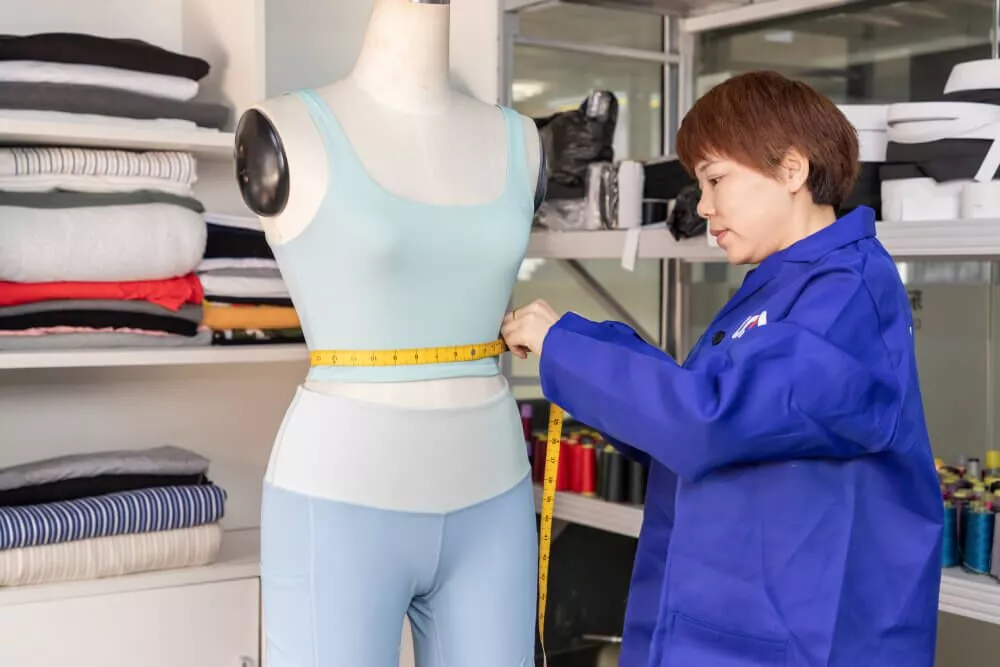
Next is to indicate who will work in the physical store and their working hours. Owners need to figure out how many personnel they need, who will manage their physical store, who will manage their online store, and what their role(s) will be in managing both the online and offline stores.
Moreover, owners may need one or two staff to manage their physical store during specific hours. However, if owners want to expand the online store into a full-fledged offline store, they must define the roles of each person working for it. Make sure to refrain from assuming complete responsibility for both of one’s stores since this could have a detrimental impact on both stores’ sales and expansion, as well as the ability to work.
Location selection
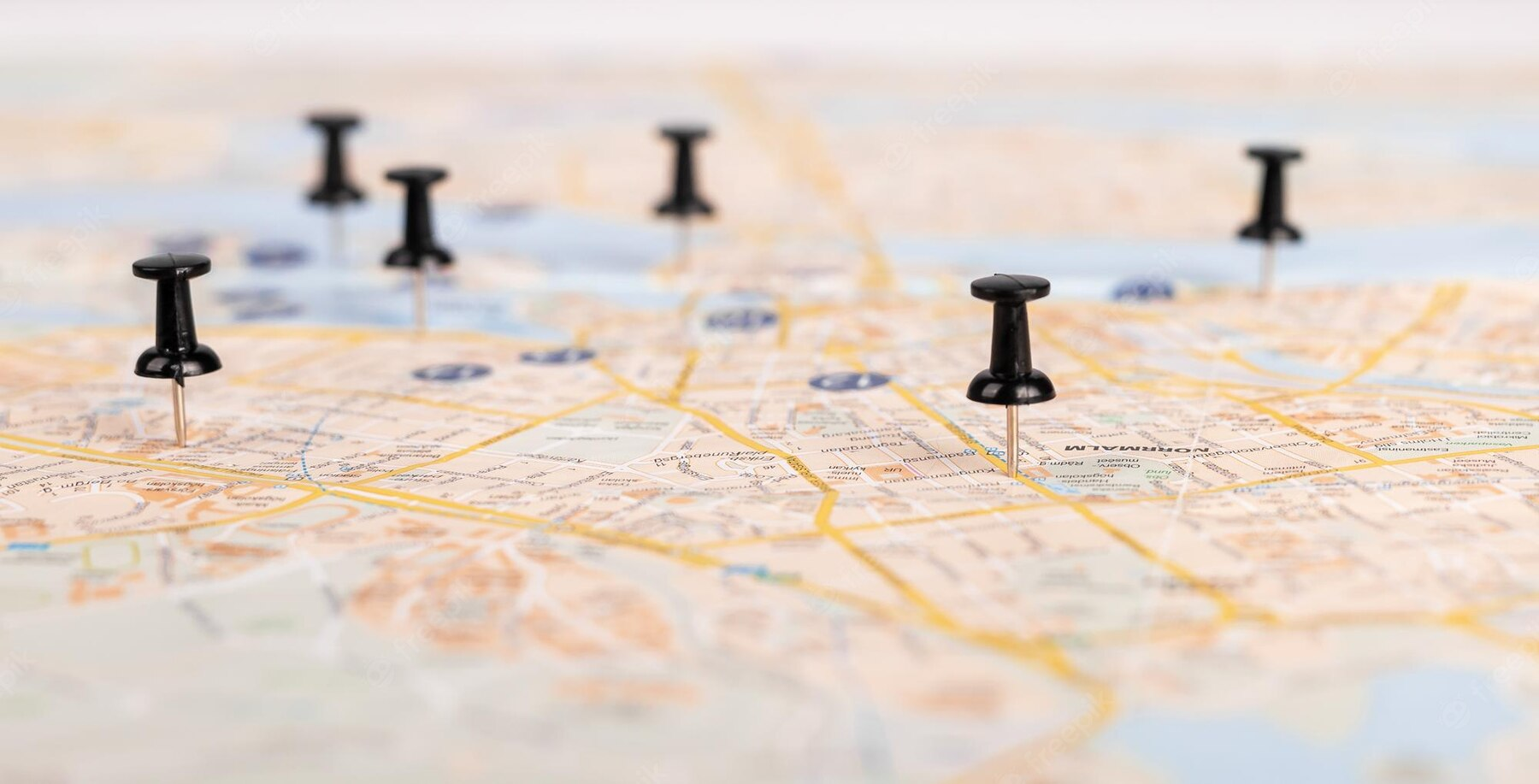
The first and most important decision is the location of the store. The physical store’s location can greatly impact one’s sales success. Customers will not hunt for the store like they do when they search online. Only the ideal location can assist in attracting the right customers. The best location may be determined by the type of products one sells and the demographics of customers. A store in an indoor or outdoor shopping mall may be the ideal solution if selling low-cost or impulse items.
Customers are unlikely to visit the store when selling expensive items, even if they are valuable and it is located in a shopping center. In this case, owners should consider obtaining a freestanding store that is easily accessible and in a densely populated location. Finally, owners must assess the overall area of their offline business to see whether it would be effective there. If they sell impulsive items, they should consider merging their store with a related store to draw the audience’s attention. Determine whether individuals in the chosen location are actively looking for the products sold. The location of the store can make or break the business. As a result, owners must devote time and resources to finding the appropriate location for their store.
Offline store design responsibility
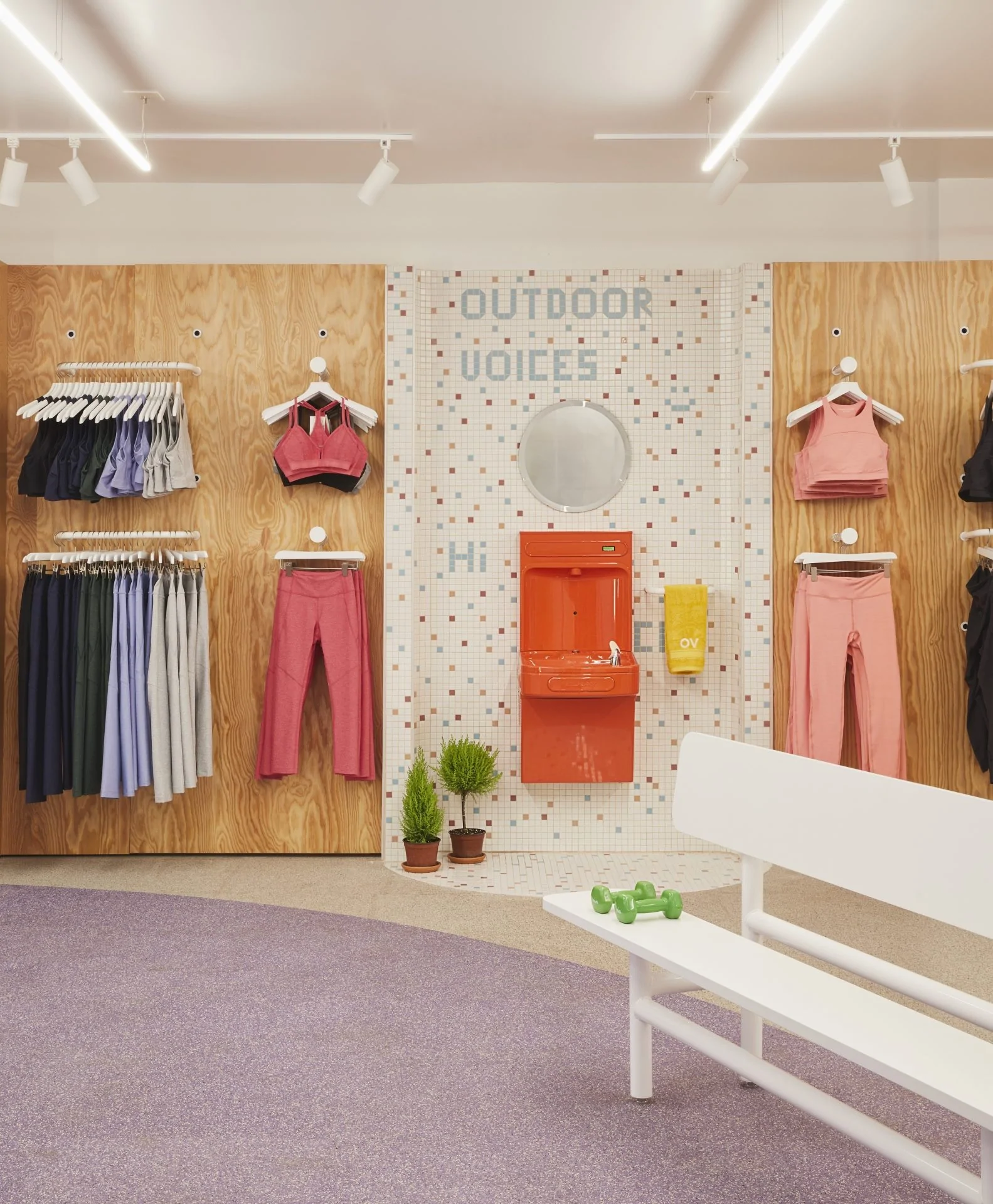
The retail experience is heavily influenced by design and aesthetics. Data is utilized to inform decisions such as product display and positioning. This design is both an art and a science. Here are some design elements that pertain to retail operations.
- The store’s exterior and interior design set the tone for the shopping experience. The design indicates a neat, well-organized environment.
- Visual merchandising and display: Create visually appealing product displays to set the tone and customer expectations. Both an appealing item display and a cluttered, untidy table send a message to potential buyers. Object location height can also have a big impact.
- Lighting, music, and consistent general store maintenance provide a pleasant atmosphere that encourages people to make purchases. Unpleasant elements such as clutter, odors, and inadequate air conditioning, might turn off customers. Personnel at the top institutions strive to create a pleasant environment that contributes to the brand’s identity.
- Signage: Placing signs inside and outside a business helps to direct clients and tell them about products, services, and special deals. Navigating a business with effective signage can be easier, and customers may miss what store management intends for them to see.
- Avoid clutter and disorganization by effectively organizing space within the store. Make things readily available and keep them in out-of-the-way locations.
Daily Operations of Running A Store
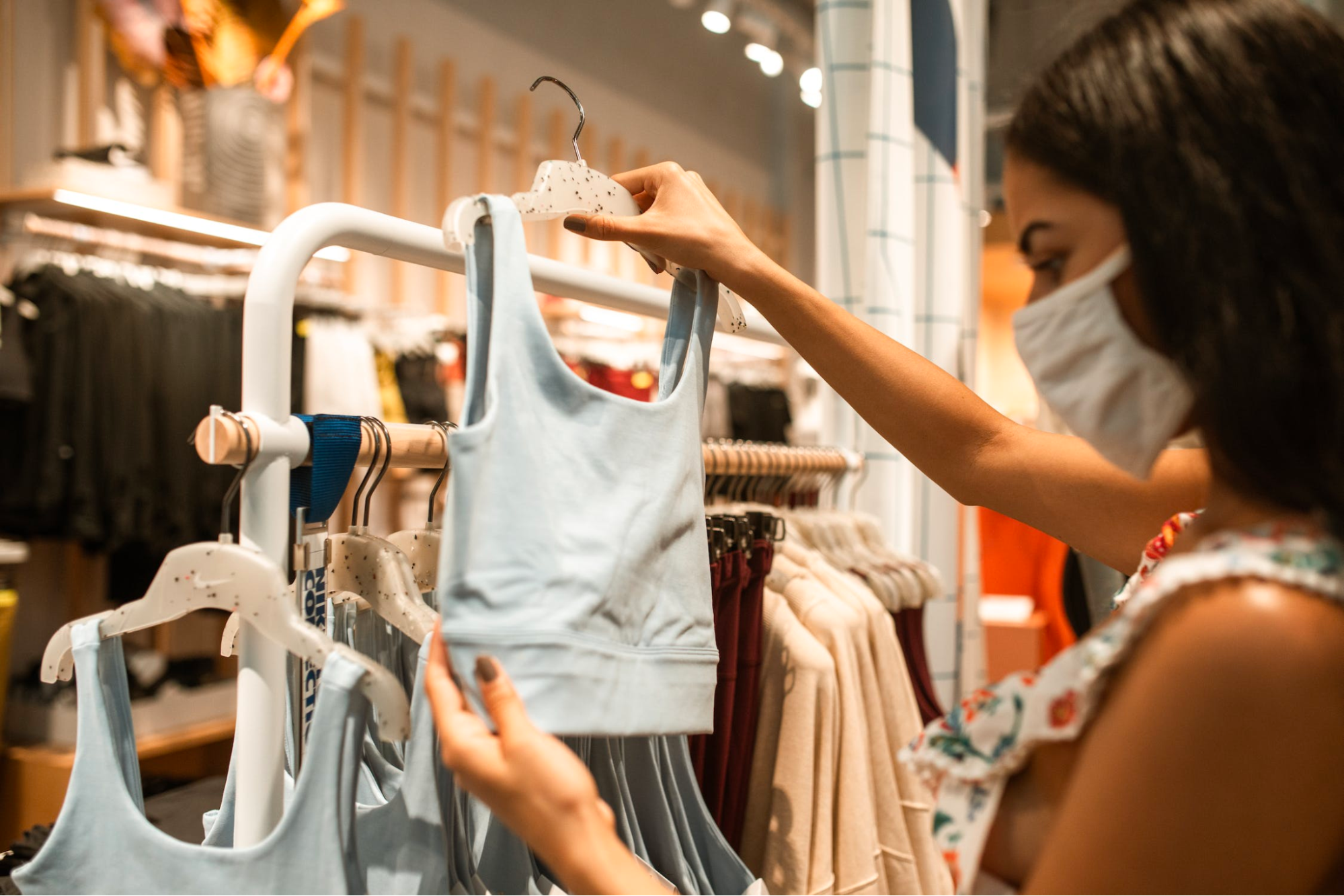
The store’s daily operations might be critical to the company’s success. Store owners may guarantee that their establishment runs smoothly and efficiently by being aware of and following best practices for everyday operations.
When running a sporting goods business, there are various aspects to consider, such as stocking shelves, organizing inventory, and providing outstanding customer service is among the most important daily activities. Retailers may create a pleasant shopping experience for customers and encourage them to return by paying attention to these principles.
In addition to managing the store’s day-to-day operations, it is critical to stay up to date on industry news and trends. This data can assist store owners in making decisions about merchandise, marketing, and other aspects of their business.
By staying educated, business owners can ensure that their establishment always performs at its best. Here are the things to keep in mind.
Store opening and closing procedures
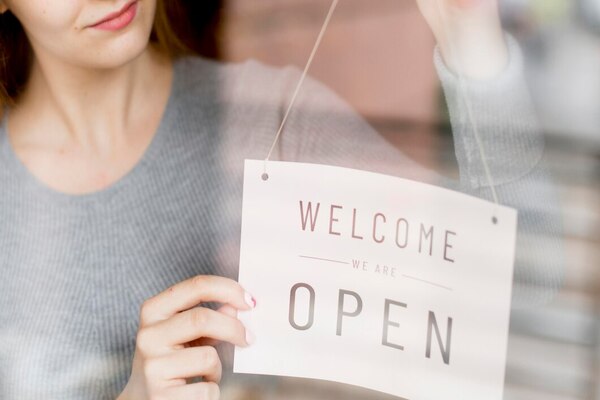
- Employees assigned to open the store must arrive early to prepare for the arrival of consumers.
- The store should open on time, as indicated by appropriate signs or lights.
- Employees should begin preparing for the store’s closure at a particular time. Cleaning and other preparations for the next day’s opening are typically included.
- Customers are notified that the store will close at specific times, such as thirty minutes and ten minutes in advance. Employees may draw gates, change lighting, or take other precautions to inform consumers.
- All cash is counted, reconciled, and reviewed by management before being secured. The responsible party receives all keys. The approach should detail precisely how such critical situations are addressed.
- Check outgoing consumers and employees to ensure they are not stealing unpaid products.
- The respective competent party inspects the opening and closing work.
Inventory management

A store must have things that satisfy its customers to succeed. The fourth aspect of retail operations is inventory management. Stores balance product supply and demand in a never-ending cycle of selling and restocking.
If a product fails to sell well, it is replaced with one that does. If a product sells well, the store will stock more of it. Despite its apparent simplicity, the complexities of supply and demand can make inventory management difficult.
Supply chain difficulties may make obtaining essential supplies challenging. A sudden shift in demand, such as introducing a new product that makes an older one less popular, could catch a store off guard.
Inventory control includes the following responsibilities:
- Purchasing products: When purchasing goods, sellers seek to anticipate client demand. Customers seek to obtain the right items in quantity and at the appropriate time. They don’t want to order too much in order to be affordable and efficient. Inventory requirements are anticipated in an automated system.
Therefore stock replenishment is also automated. Another factor to consider is a product assortment. The purpose of businesses is to give customers a variety of commodities, sizes, colors, and other qualities at reasonable rates.
- Inventory management systems are classified into three types: perpetual inventory, physical inventory, and combination. Quantities in perpetual inventory are adjusted after each transaction. This is how modern computerized point-of-sale systems work.
The inventory is physically counted. Both systems are used in a mixed system, with the physical count as a cross-check for the computerized system.
- Stores get deliveries from their suppliers and distributors: They diligently maintain and record the inventory, ensuring it is handled appropriately and in good condition.
- Pricing: Stores set prices and mark products physically on the product, electronically via the product’s barcode, or both. Price reductions are influenced by supply and demand, the season, and other factors.
- Restocking shelves and displays, shifting products for customers, and shipping merchandise to customers are all part of the job.
Operations workers manage supplier, distributor, and other vendor connections and the flow of products to the shop for retail sale to customers. Problems in the supply chain may arise, resulting in bottlenecks, backorders, or quality issues, which are handled by store operations workers.
Customer service

Customer service, or how a company serves its customers, is critical to a store’s success. Customers may not always be correct, but they are a potential review and sales of the business. Superior customer service can help stores compete more effectively and even compensate for inadequacies in other areas, such as convenience or pricing.
Positive, personalized customer service may help the little guy compete with the big guys, and brick-and-mortar firms compete with online businesses. Additionally, some customers after a favorable encounter with customer service, 89% are more inclined to make another purchase.
On the other hand, online businesses have become increasingly adept at providing remote customer care, such as convenient returns. To attract repeat business, the best-run stores train their employees to greet customers and provide outstanding service.
The following questions are about customer service:
- How are customers greeted as they enter the store?
- Is there any familiarity with returning customers?
- Is individualized service available? How far does it go?
- How does the store reply if it does not have the desired item in stock? Is it willing to reveal who else could own the item?
- Does the store offer helpful advice after carefully listening to the customer?
- Is loyalty rewarded, for example, through loyalty programs?
- How does the store handle a customer’s problem or concern?
Returns and refunds are another essential part of customer service. When returns are processed smoothly, a store earns the trust and loyalty of its customers. Additionally, businesses should actively monitor returns in order to uncover patterns and resolve concerns. This technique is aided by technology.
Housekeeping

Making sure the store is clean before leaving will make the opening process easier and more efficient the next day. Follow this daily opening and closing housekeeping checklist:
Opening housekeeping duties
- Look for wetness on the floor, ceiling, and walls. These could be signs of plumbing, heating, or cooling issues.
- Examine the area for vermin and other pests. If there is a problem, call an exterminator. Furthermore, perform basic cleaning, such as floor sweeping, to ensure that the fitting rooms are ready for customers. Make sure the windows are pristine.
Closing housekeeping duties
- Finish the general cleaning, including wiping down the counters and the mirrors, and check that the dressing rooms are tidy.
- Clean the floors with a damp mop and dust the product displays and other fixtures.
- Put an end to all of the electrical activities. Take out the trash and separate the recyclables.
- Get ready for the following day. Place new items, like merchandise, in the appropriate location, so that opening staff members know they need to unpack them and display them on the floor.
Functions of cash, fraud, and internal control

Stores must define, implement, and monitor these areas of their operations with considerable care because they directly impact the bottom line.
Managing cash and credit
Competent cash and credit administration necessitate skilled people and a robust system for tracking everything, detecting problems quickly, and putting the store’s money and inventories on a solid, precise foundation.
A point-of-sale (POS) system is a prevalent type of modern technology that can manage everyday transactions, customer management, and inventories. This can make tracking and reconciling daily purchases with the system’s cash and credit much more manageable.
However, some businesses may compare POS data with physical counting or cross-checking. During the day, they may do unannounced cash or inventory counts, especially if difficulties arise. It is determined by the size and complexity of the retail operation. In any event, keeping correct cash, credit, and inventory records is critical for a company.
Safety and security
Retailers place a premium on the safety of their employees and customers. They may hire security guards and install surveillance cameras. Police calls to retailers can be frequent, depending on the store’s regulations. Several establishments today are quicker to notify the authorities due to liability worries.
Preventing shoplifting and fraud
Stores devote significant resources to preventing theft and fraud (personnel and technology). Some keep it secret to avoid interfering with the customer’s experience. Others, such as security at the door of a jewelry store, maybe more straightforward.
Security cameras, monitoring, and product scanners are also common. Significant losses can come from shoplifting and fraud, especially from organized rings and scams; consequently, retailers must be vigilant and spot problems as soon as they arise.
Internal controls
Stores develop and maintain internal controls or standard operating procedures to prevent problems with cash processing, credit, shoplifting, and fraud. These protections prevent money or inventory theft.
They include cross-checks, such as cash deposit slips, and a clearly defined set of permitted activities so that only specified levels of workers have access to specific items or retail locations. Employees at different levels must also sign off on one another’s work so that no one individual may function in secret.
A store would be vulnerable to employee, customer, or supplier theft or fraud if these safeguards were not in place.
Marketing and Store Promotion

The business can broaden its reach, connect with customers, create connections, and communicate the brand’s narrative through retail marketing. It can also be used to identify one store from another.
Marketing, thankfully, is broader than giant corporations with large budgets. Retail businesses of all kinds and industries have many marketing options, regardless of budget or experience.
Social media

When it comes to retail and social media pay close attention to Facebook, Instagram, Pinterest, and TikTok. These networks are the most consumer-oriented, making them ideal for firms looking for new customers.
1. Facebook
- On Facebook, businesses may often contact their customers, advertise their products, organize on-platform events using an integrated event function, and use capabilities such as live broadcasting to build meaningful connections.
- On Facebook, users can create Groups for their company or brand. Consider Facebook Groups communities or clubs for the most engaged customers and fans.
- Users can reach their target demographic with Facebook advertising. The good news is that Facebook has a variety of advertising packages available, each with advanced audience targeting features.
2. Instagram
- Instagram is one of the most prominent social media networks today, with over a billion monthly active users. Stores can engage with audiences by posting short-form video snippets to Instagram Stories or Reels, uploading product or in-store photographs to the feed, hosting live events on Instagram Lives, and publishing longer-form content on IGTV.
3. Pinterest
- Pinterest, like Google and YouTube, functions as a search engine. The platform is used by over 433 million individuals to make informed shopping decisions, as well as for inspiration and how-to guides.
- Pinterest also features e-commerce capabilities, allowing users to tag their products in specific pins for shoppers to buy directly from the platform. Another common way is Pinterest advertising.
- Users can create blog posts specifically for Pinterest, such as gift guides that increase brand visibility and direct clients to relevant websites throughout the year.
4. TikTok
- TikTok is taking over the social media scene. TikTok, one of the world’s fastest-growing applications, became the first app not owned by Facebook to surpass 3 billion downloads worldwide.
- The combination of the short-form video format and TikTok’s algorithm based on user interests makes the site highly user-friendly to small businesses.
Email marketing
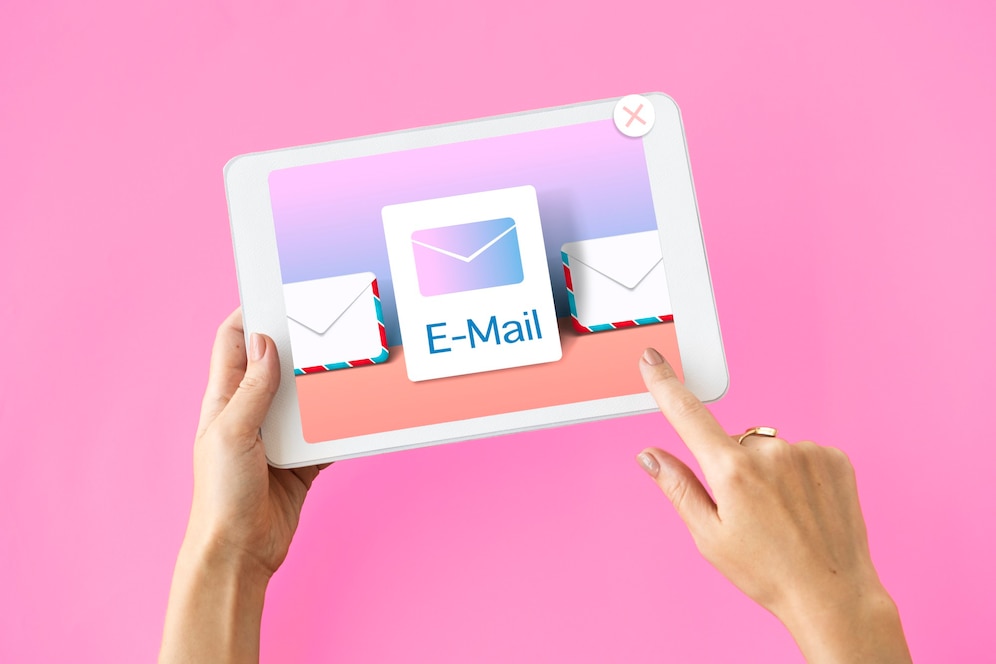
Email marketing is still the most effective marketing channel, with a $42 return on investment for every dollar invested. Using email to get new customers takes only a basic understanding.
It will assist retailers in retaining customers without the use of an algorithm. They may provide segmented adverts via email marketing depending on clients’ historical purchases and current behaviors, such as abandoned shopping carts and product page visits.
This form of personalized advertising is quite effective and fantastic for reminding clients. Moreover, email marketing is one of many ways to acquire new customers.
Furthermore, business managers must consider the long game of email plus content marketing, which entails distributing valuable information without complex sales or strings attached. This builds credibility and positions the brand as an authority.
What is the conclusion? The email marketing strategy should include both promotional and instructive content. Determine the best balance for one’s subscribers and proceed from there.
Referral campaign

Use a referral campaign to capitalize on word-of-mouth marketing. There are various types of referral marketing, but the basic idea is that stores reward delighted customers for spreading the word about their products.
Customers trust referrals from people they know 92% of the time, making referral programs a highly effective retail marketing approach.
Incentives for customers to refer their friends can lead to increased high-quality traffic and recurring purchases from both parties. A common way to accomplish this is to provide a discount coupon to customers and referrals. Retailers can promote referral and loyalty programs both online and in-store.
In-store merchandising

In-store merchandising is the strategic placement of merchandise within a retail setting to increase customer interest and encourage impulse buys. Retailers use a variety of merchandising techniques to control the way customers interact with products in order to maximize sales and profits. Common in-store merchandising strategies include product placement, product bundling, and end-cap displays.
Product placement
Product placement is the strategic placement of merchandise within a retail space in order to increase customer interest and encourage impulse buys. Retailers use a variety of techniques to control the way customers interact with products, such as shelf positioning and end-cap displays.
Product bundling
Product bundling is a merchandising technique that involves grouping together similar or complementary products and selling them as a single unit. Product bundles can increase sales by making it easy for customers to buy multiple items at once and by creating a sense of value around the bundled products.
End-cap displays
An end-cap display is a type of product display that is typically found at the end of an aisle in a retail setting. End-caps are usually larger than other types of displays and can include features such as shelves, racks, or bins to hold products. End-caps can be used to showcase new products, promote sales, or highlight seasonal items.
Gift certificates or products as prizes

The most successful way to attract and convert customers is to astonish them with the product. Maintain a consistent supply of the necessary goods. After choosing the right item, come up with creative displays and arrangements to make it stand out.
Storefront displays, product displays, cash wrap, and retail point-of-sale (POS) systems are all examples of in-store visual merchandising. The idea is to present items in a way that draws customers’ attention and motivates them to purchase.
This could include any of the following:
- Signs of promotion, such as a buy-one-get-one-free offer
- Putting the best-selling items on mannequins in the store’s center will boost sales.
- Customers are enticed to make impulse purchases via displays near the cash register.
While gift certificates and products may seem like simple prizes, they can actually be quite effective in attracting and converting customers. Offering a prize that is relevant to the business, can show customers that the company understands their needs and is invested in their satisfaction. Additionally, offering a prize that is unique and eye-catching will help the business stand out from the competition.
Conclusion
Even though founding and managing a sporting goods store might be expensive, it is a rewarding business enterprise for sports enthusiasts. As a result, offline stores can use the techniques mentioned in this article to learn how to start a sporting goods store — specifically, distinguish themselves from local competitors and appeal to a specific target market.
When looking for a manufacturer of workout clothes, the company must be an expert and will follow their client’s standards and offer suggestions to make ideas stand out. Uga provides robust customization services such as logo development, branding, printing, packaging, and production management. This allows companies to have their own distinct products without the hassle and expense of creating their own production facility. Contact Uga now for more information!

